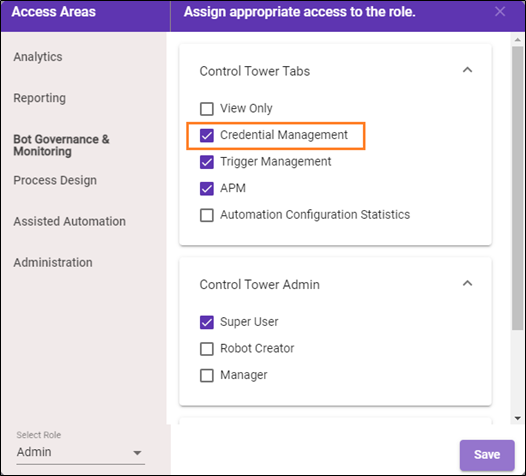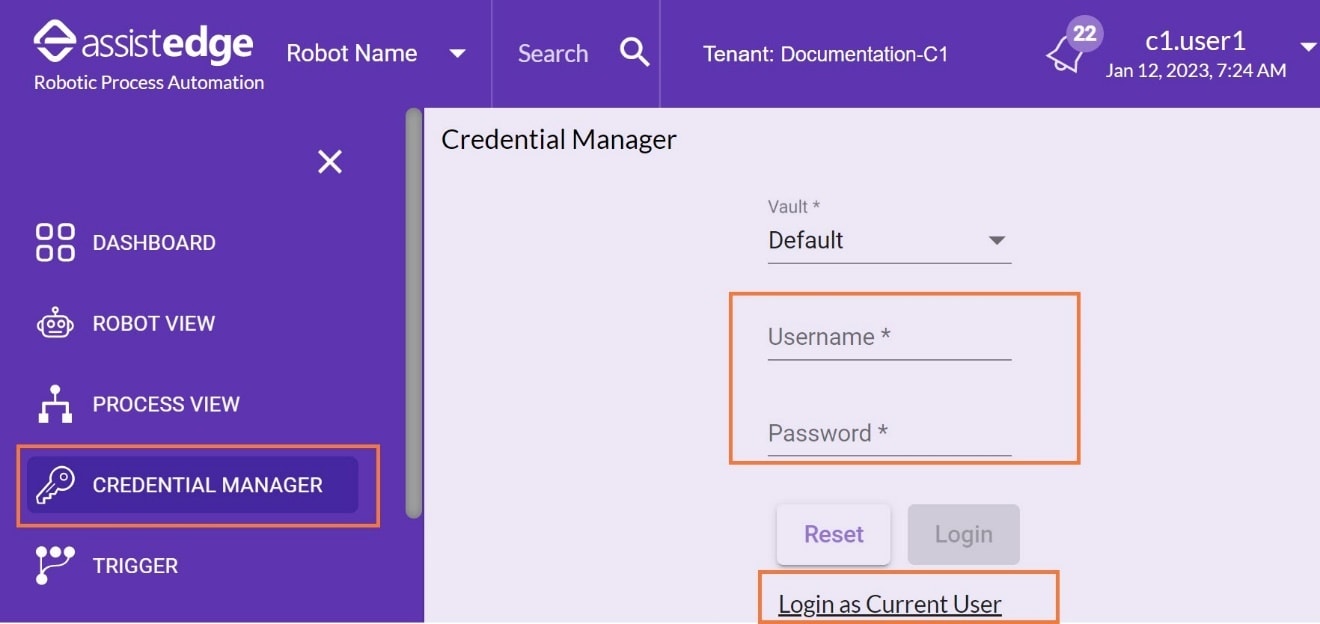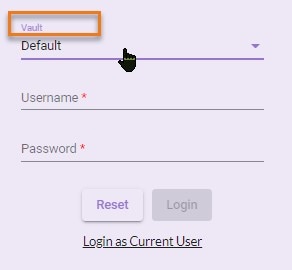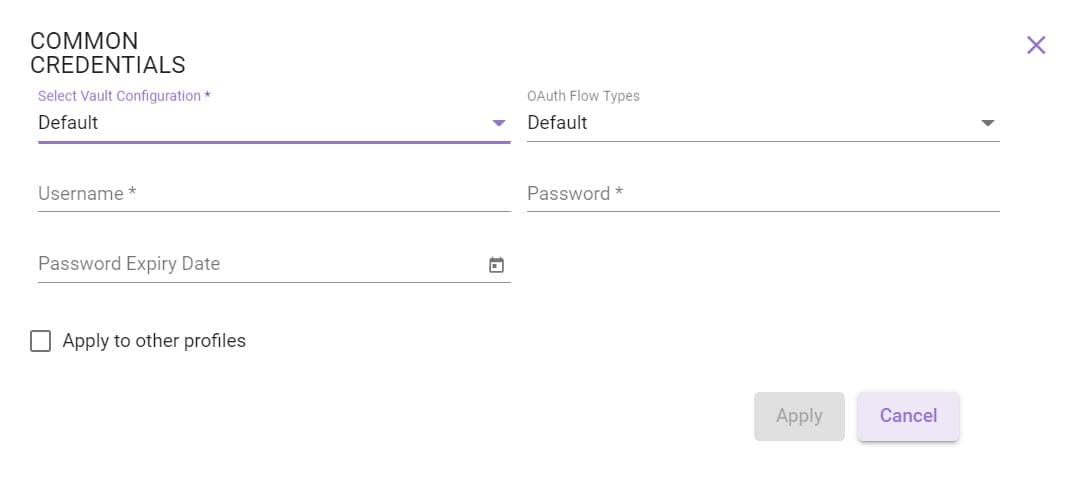Credential Manager
Credential Manager is a secure repository wherein the details used while logging into the applications are stored. These details are encrypted in the AssistEdge Database and are accessible to only the authorized users.
Credentials Manager determines which profile, processes, users and roles have permission to access the information.
As Super Admin, you can manage the credentials for profiles through the credential vault. A credential vault is a repository that holds the credentials, such as user IDs and passwords, for the profiles. Only Robot Creator, Super User, Manager or Robot Owner are allowed to access the Credential Manager.
Configuring Credential Manager
Credential Manager tab is accessible only to the users with relevant access.
To configure the credential manager:
- Ensure that logged-in user role has page access to the Control Tower.
- Logged-in user should be mapped to RPA_Trigger Management access in Specify Role access. For more information about user role mapping, see Managing Roles section.

Starting with Credential Manager
The only vault type that Credential Manager offers is Default vault type.
To start with credential manager:
- From the Navigation panel, click the
 (Credential Manager) icon or click Credential Manager.
(Credential Manager) icon or click Credential Manager.
|
NOTE: |
Update and save the credentials for applications mapped to the profiles assigned to a particular User ID, using the Credential Manager. |

The CREDENTIAL MANAGER page is displayed.
- Enter your username and password, and then click Login. You can also click Login as Current User to immediately log into Credential Manager.

NOTE:
Click RESET to reset the login details of an application.
A message as Authentication Successful appears. Then, logged in user is logged in to the Credential Manager page.

The Authentication Successful message appears, and the user is logged in to the Credential Manager page. - You can update the credentials for all the applications under different profiles.
Credential Manager comprises of two tabs, which includes:
Credential Manager
Credential Manager enables you to update the credentials. This tab displays all the linked profile with the applications.
Default
If the credentials are already saved in the vault manager, you can select Default type.
Below are the various authentication details required depending upon the Modern Authentication type:
- Loginid or Username - the email ID required to login to the application.
- Password - the password corresponding to the loginid or username required to login to the application.
- SecretKey – the MFA key using which OTP code gets generated.
- AuthorizeEndpoint - the URL to request authorization. For example, https://authorization-server.com/oauth/authorize.
- CallbackUrl/RedirectUrl - the URL to which you must be redirected after the authorization is complete. For example, https:// authorization-server.com/oauth/nativeclient.
- AccessTokenUrl – the URL that must contain the access token.
- ClientId- the unique identifier for your application that you receive at the time of registering the application. For example, 6779ef20e75817b79602.
- Scope - the grants used to limit different levels of application access. An application can request one or more scopes. For example, User.Read Mail.Send.
- ClientCertificate - a certificate used to authorize the application requesting the access token. This certificate is password protected and typically contains information such as the digital signature, client name, expiration date and so on.
- ClientCertificatePassword - the password of the client certificate.
- Certificate Expiry Date – the date of expiration of the client certificate or client secret key.
- ClientSecret - a value used to authorize the application requesting the access token.
|
NOTE: |
|
To start with default vault type in credential manager:
- Click Credential Manager.
- Selectthe Application profile for which the sign-in to application is required.
|
NOTE: |
Under the Non Sign In Applications, applications for which the sign-in process is not required is displayed. |
- Click on the Subscription key and enter LoginId and Password.

- Click UPDATE to update the credentials of the applications.
Use Common Credentials
Use Common Credentials enables you to store the credentials for multiple profiles at a time.
To use common credentials:
- Select the Application profile for which the sign-in to application is required.
- Click Use Common Credentials.

The Common Credentials window is displayed. - In the Select Vault Configuration list, select the default vault option.
Vault Manager
Vault Manager enables you to set the default values of the particular Vault. When the values are set in the credential manager, they directly populate in all the configured application which configured for the first time or are using Default as Vault Type.